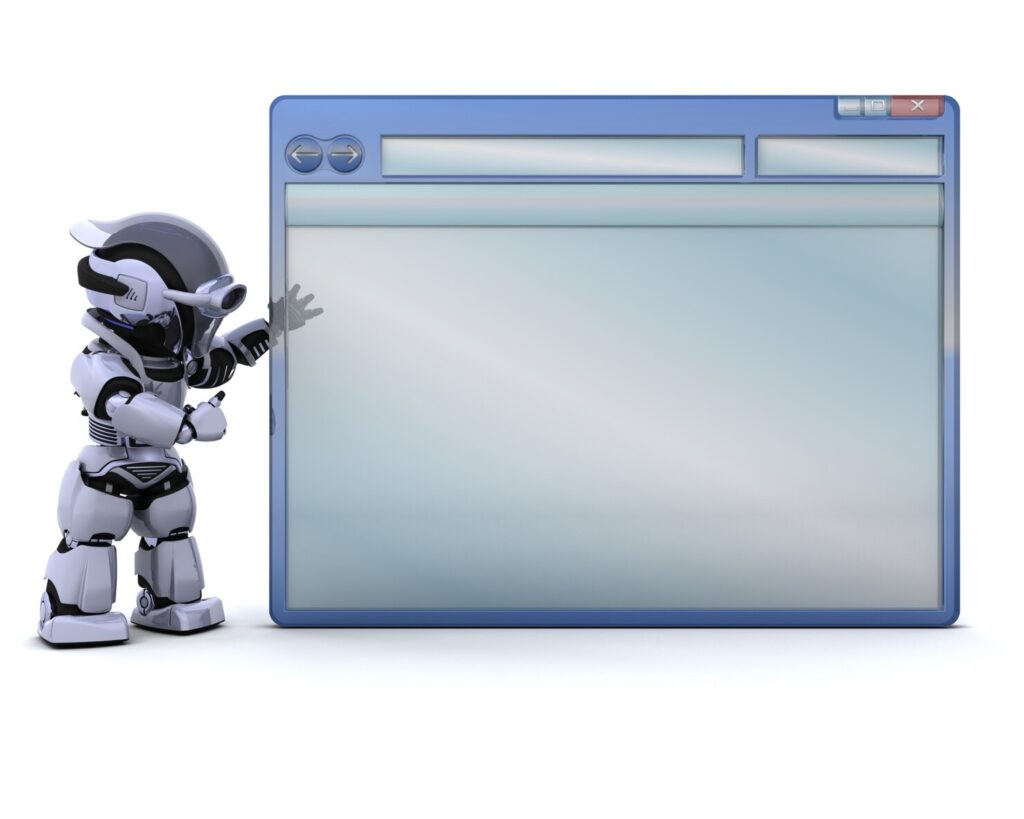Introduction to AI in Web Development

Artificial intelligence (AI) is increasingly becoming a cornerstone of modern web development, reshaping how developers approach the creation and optimization of websites. In today’s digital landscape, the integration of AI technologies into web development projects offers numerous advantages that can significantly enhance user experience, streamline design processes, and boost website functionality. The relevance of AI is underscored by its ability to analyze vast amounts of data quickly, allowing developers to understand user behavior more effectively and tailor solutions accordingly.
The benefits of incorporating AI into web development projects are manifold. For instance, AI-driven tools can automate repetitive tasks, allowing developers to focus on more creative aspects of their work. This could involve generating code snippets, optimizing images, or even suggesting design improvements based on user interactions. Moreover, AI can facilitate personalized user experiences by employing algorithms that adapt content dynamically, ensuring that visitors receive tailored recommendations and relevant information throughout their browsing journey.
Several popular AI tools and platforms are available for web developers looking to harness the power of artificial intelligence. For example, tools like TensorFlow and PyTorch can help in building intelligent applications that predict user behavior or analyze data trends. Additionally, integrations with chatbots, such as Dialogflow and Microsoft Bot Framework, allow websites to enhance customer engagement through intelligent automated conversations. Furthermore, employing AI-driven analytics platforms can provide actionable insights into user interactions, enabling continuous improvement of web development initiatives.
Ultimately, embracing AI in web development not only elevates the performance of websites but also positions developers at the forefront of technological innovation, indicating a promising future for the industry. As AI continues to evolve, its role in transforming the landscape of web development will undoubtedly expand, fostering greater creativity and efficiency in project execution.
Choosing the Right AI Tools and Technologies
In the rapidly evolving field of web development, selecting appropriate AI tools and technologies is essential for the success of any project. The vast array of frameworks, libraries, and resources available can be overwhelming at first glance. However, understanding the specific requirements of your project can significantly streamline the selection process.
When evaluating AI tools, one should consider several key factors, including the nature of the project, scalability requirements, and ease of integration with existing systems. Popular frameworks such as TensorFlow and PyTorch afford developers the flexibility to build and deploy machine learning models, while libraries such as Scikit-learn provide robust resources for data analysis and preprocessing. For tasks involving natural language processing—an increasingly significant component of web development—tools like SpaCy and NLTK deliver sophisticated capabilities.
It is also crucial to assess the community and support surrounding the tools and technologies. Established frameworks benefit from comprehensive documentation, active forums, and ongoing updates, which can accelerate project timelines and reduce troubleshooting difficulties. Furthermore, aligning your chosen tools with your team’s expertise can foster greater collaboration and efficiency during the development process.
Emerging trends in AI technology also merit consideration, as they can introduce novel opportunities for enhancing web development projects. Keeping abreast of innovations, such as generative adversarial networks (GANs) or reinforcement learning, can empower developers to integrate cutting-edge techniques that enhance user experience and optimize performance.
Ultimately, the right combination of AI tools and technologies must align with the project’s goals and technical requirements. By conducting thorough research and maintaining agility in adaptation, developers can leverage these powerful resources to create impactful AI-powered web applications.
Creating Your AI-Driven Web Project: Step-by-Step Guide

Embarking on an AI-driven web development project requires careful planning and execution. The journey begins with ideation, where identifying a problem that can benefit from AI insights is crucial. Consider how you can enhance user experience, automate tasks, or provide personalized content through a web application. Document your ideas and establish clear objectives to guide the development process.
Once you have your project idea, the next step involves designing the architecture of your web application. This includes determining the necessary functionalities and features that will be augmented with artificial intelligence. Additionally, selecting an appropriate tech stack is essential. Popular frameworks for web development, such as React, Angular, or Vue.js, can be integrated with backend systems like Node.js or Python, which are often favored for AI applications due to their extensive libraries.
With the groundwork laid, it is time to start coding your application. Begin by setting up a version control system, such as Git, to track changes and manage collaboration effectively. Implement the fundamental web development practices, focusing on clean code and modular design, to ensure your project remains maintainable as it grows. While coding, you will likely need to integrate various APIs to access AI models. Services like Google Cloud AI, IBM Watson, or OpenAI can provide you with pre-built models that may serve your purposes, streamlining your development process.
However, challenges may arise during development, such as data preparation and model integration. It is essential to test your AI components rigorously to ensure they perform as expected. Consider establishing a feedback loop with beta users to gain insights into any issues and make necessary adjustments. This iterative process will strengthen your project and enhance its usability.
Future Trends and Considerations in AI Web Development
The integration of artificial intelligence (AI) into web development has accelerated in recent years, and several emerging trends are poised to shape its future. One significant area of advancement is machine learning, which allows web applications to learn from user interactions and improve their functionality over time. This capability leads to more personalized user experiences, enhanced functionalities, and significantly reduces the need for manual coding for repetitive tasks.
Natural language processing (NLP) is another transformative trend in AI web development. With NLP, websites can offer more intuitive interfaces that understand and respond to user inquiries in real-time. Chatbots and virtual assistants powered by NLP can facilitate customer support and content navigation, elevating overall user satisfaction and engagement. As these technologies improve, businesses can expect to serve their clients more effectively, allowing for quicker resolutions and a more streamlined experience.
Automation is also set to redefine web development processes. Automation tools are emerging that not only streamline coding tasks but also assist in testing and deployment, ensuring that web applications are both stable and effective. These tools can help developers focus on creative aspects, fostering innovation while minimizing the risk of errors. As AI technologies continue to evolve, the potential for automated web development will only increase.

